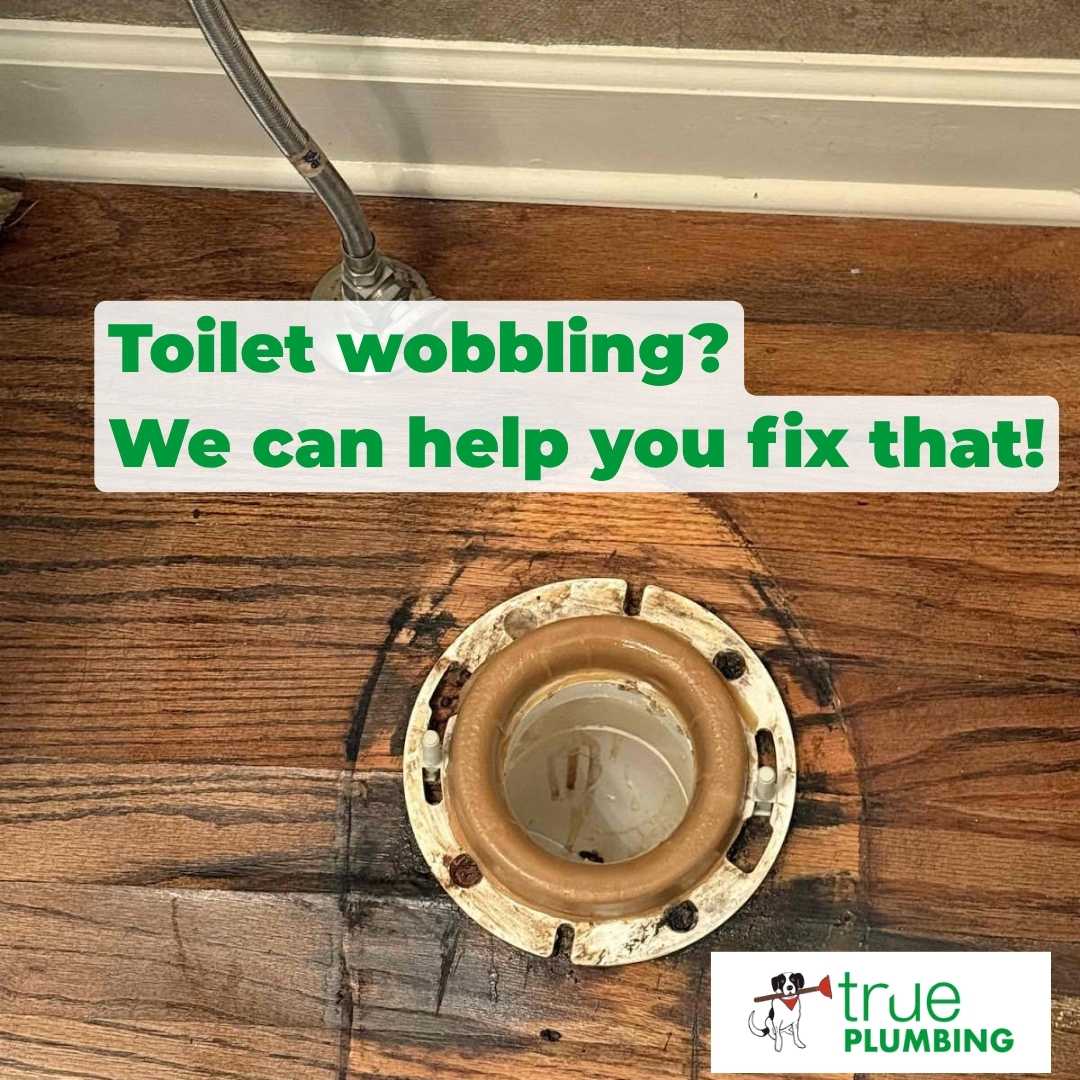
If your toilet is wobbling when you sit on it, the seal where it connects to the drain pipe below may not be intact. This is a common cause for sewage leaks and stinky sewer gases getting into your home and causing damage.
To begin this repair, we will uninstall the toilet and set it aside on a plastic sheet to keep the floor clean. Next, we clean any old caulking or grout from the area where the toilet sits on the floor. We scrape off the old wax seal from the toilet flange and take a look at the condition of the flange. A proper flange will sit about ¼” above the surface of the tile. If it is broken, we will make a repair so the toilet can connect securely back to the flange. There are many ways to repair or replace a flange depending on whether it’s made from PVC, steel, brass, or lead. Sometimes we have to go beneath the floor and replace a section of pipe along with the toilet flange depending on the pipe configuration.
Nine out of ten toilets will still wobble once installed, so we stabilize it with shims- small wedges that brace the uneven areas. Then, after ensuring the toilet is stable, we caulk the base of it with clear or white caulk depending on the color of the floor. The caulk serves two purposes: It leaves a smooth look that is easy to clean and also keeps the toilet secure to the floor so it won’t wobble. As an additional measure to reduce the risk of leaks, we will install a new supply line and thoroughly test for proper function after the install is complete.
A properly installed toilet flange with wax ring and bolts. Note the floor damage from a previous leak. It can be difficult to keep a toilet stable and secure on a wood floor.
